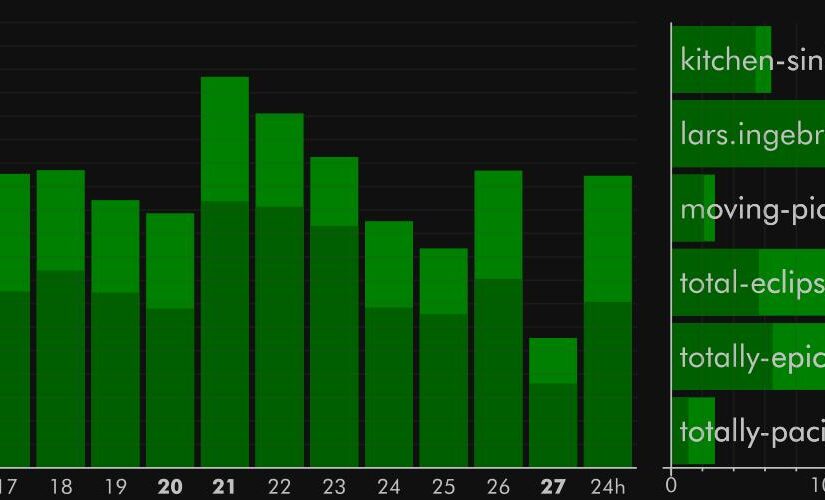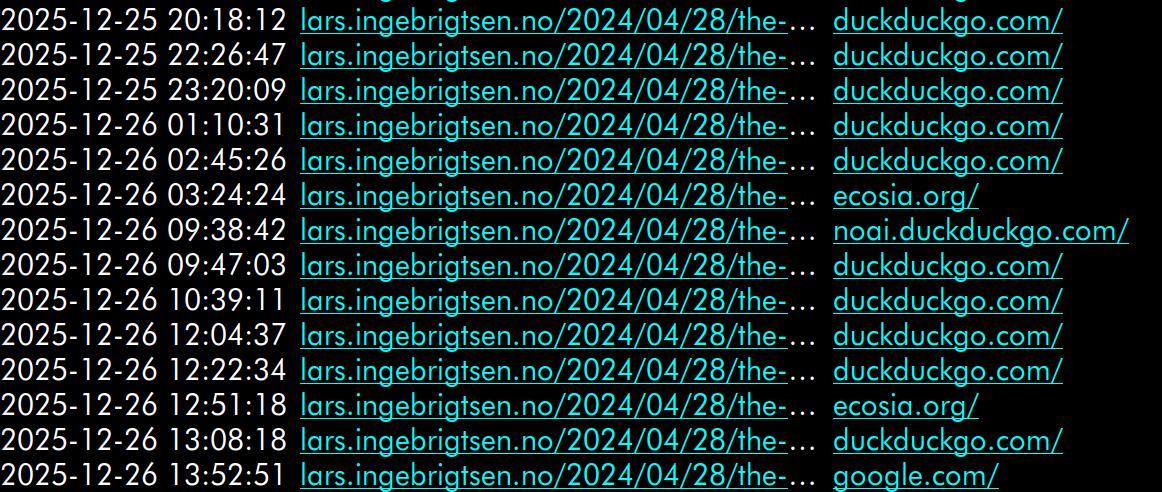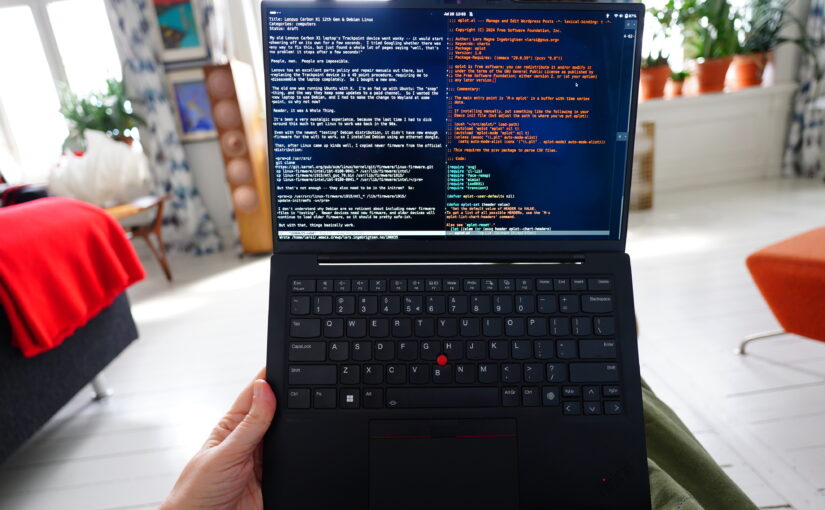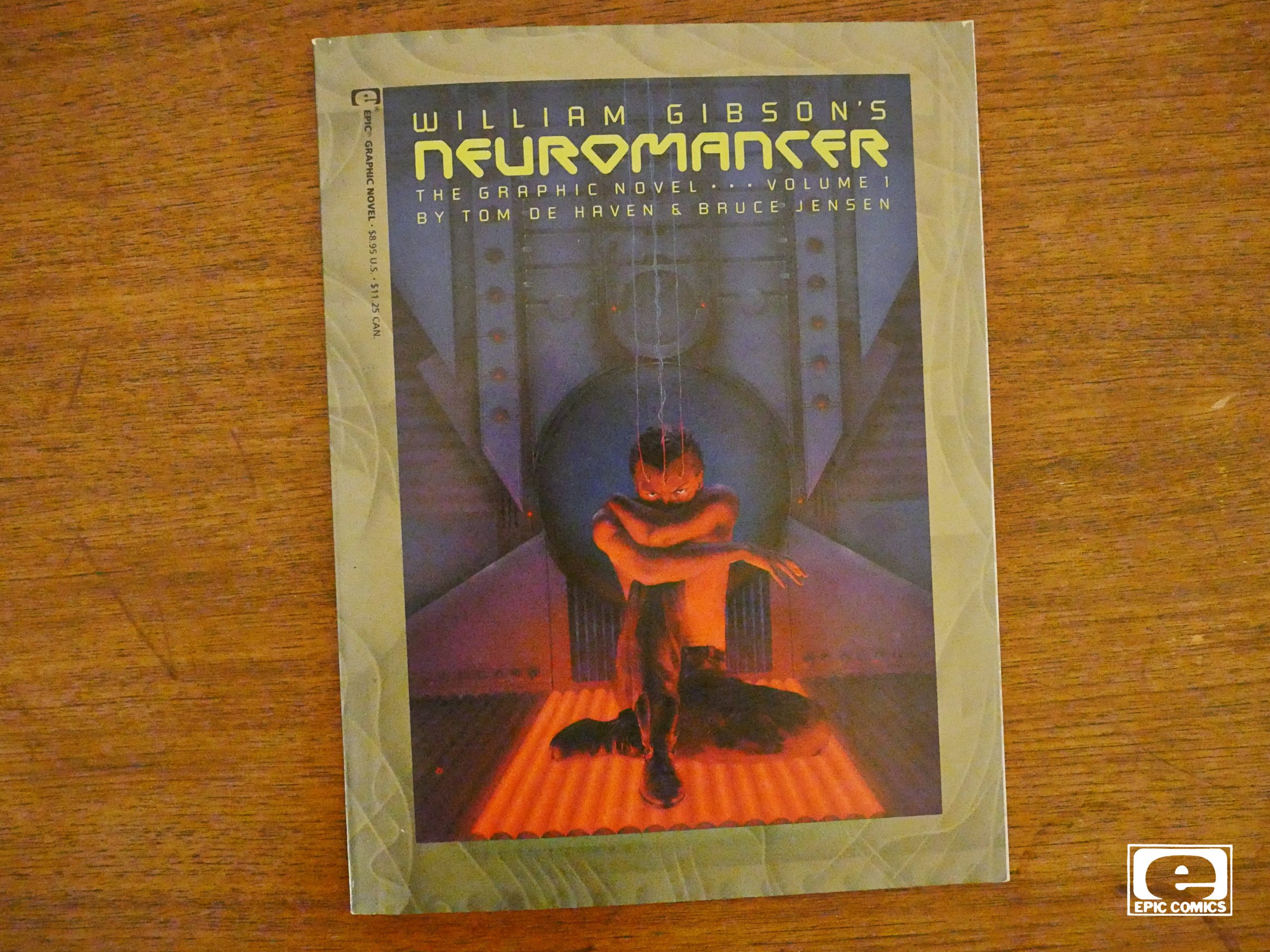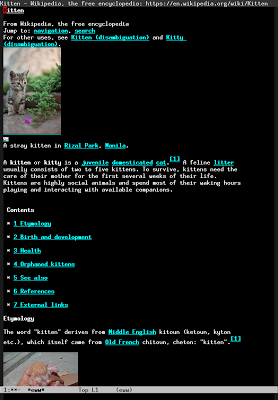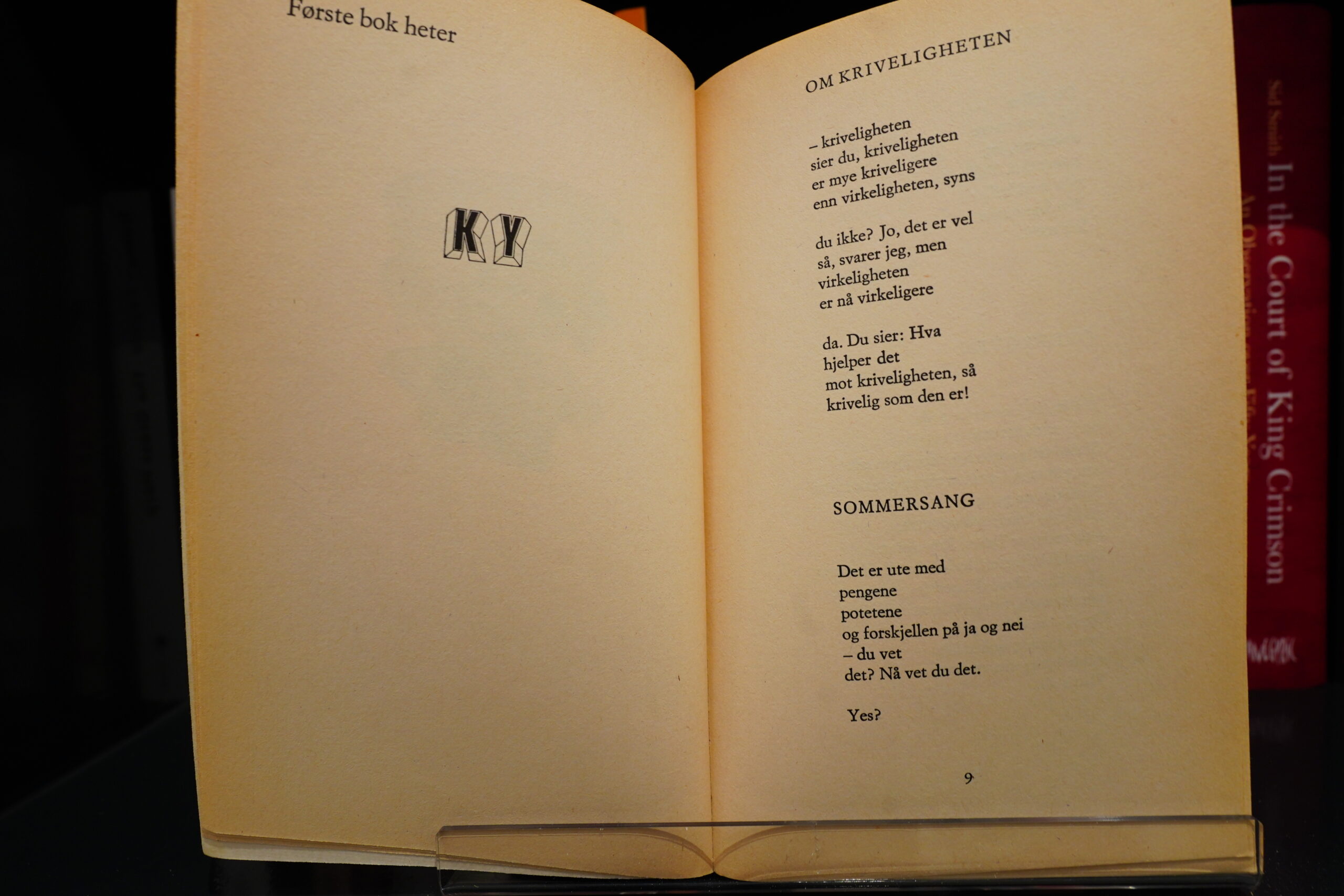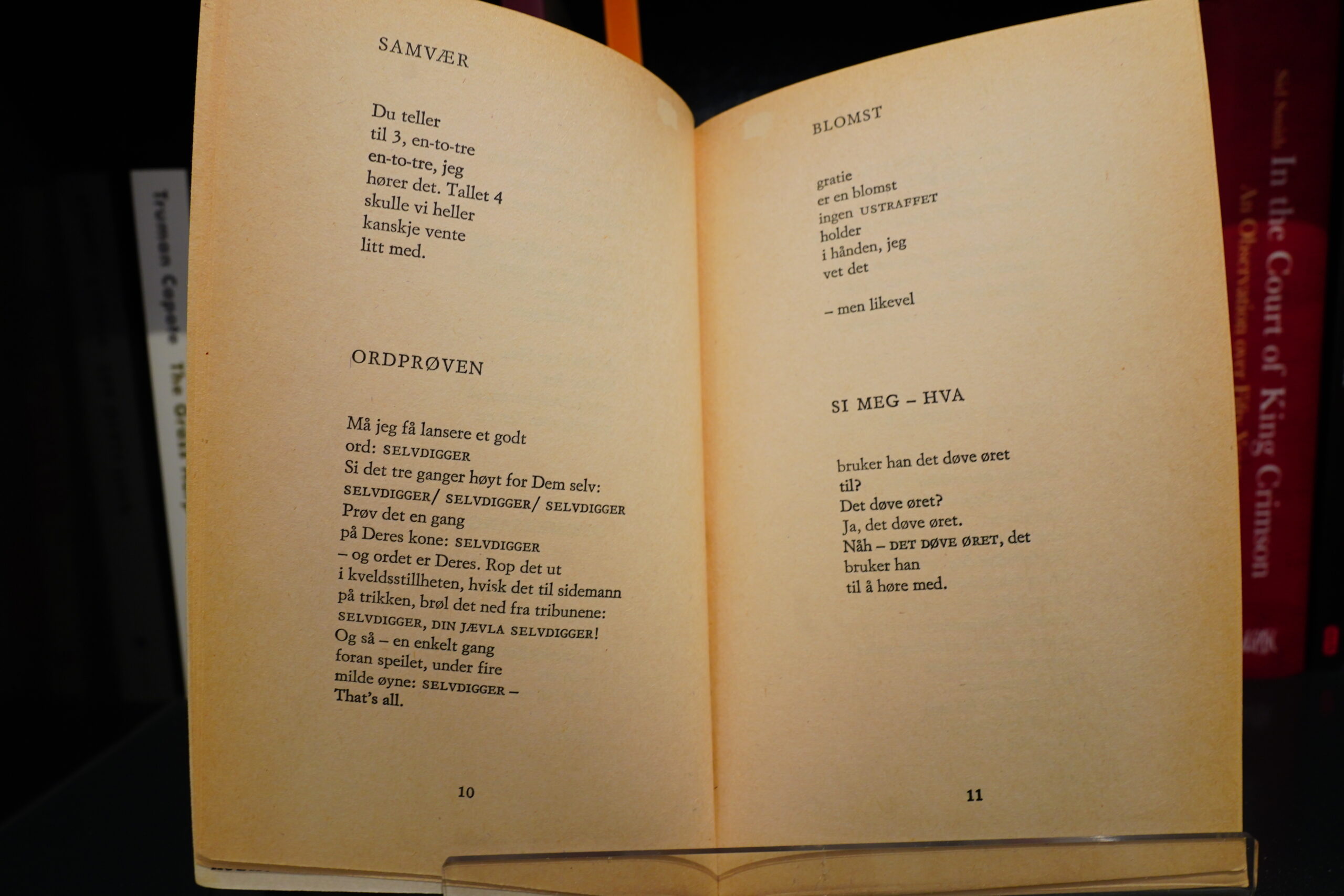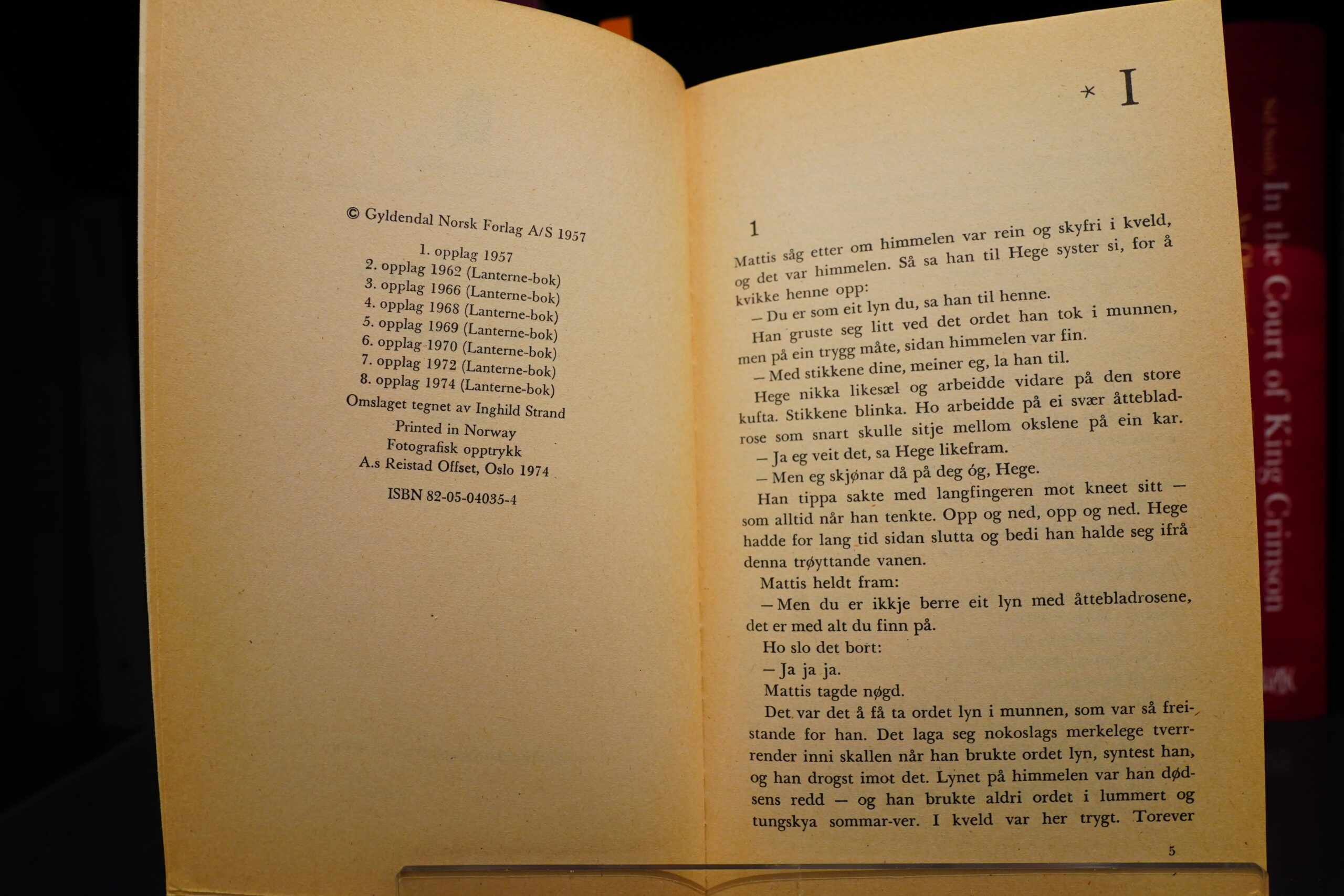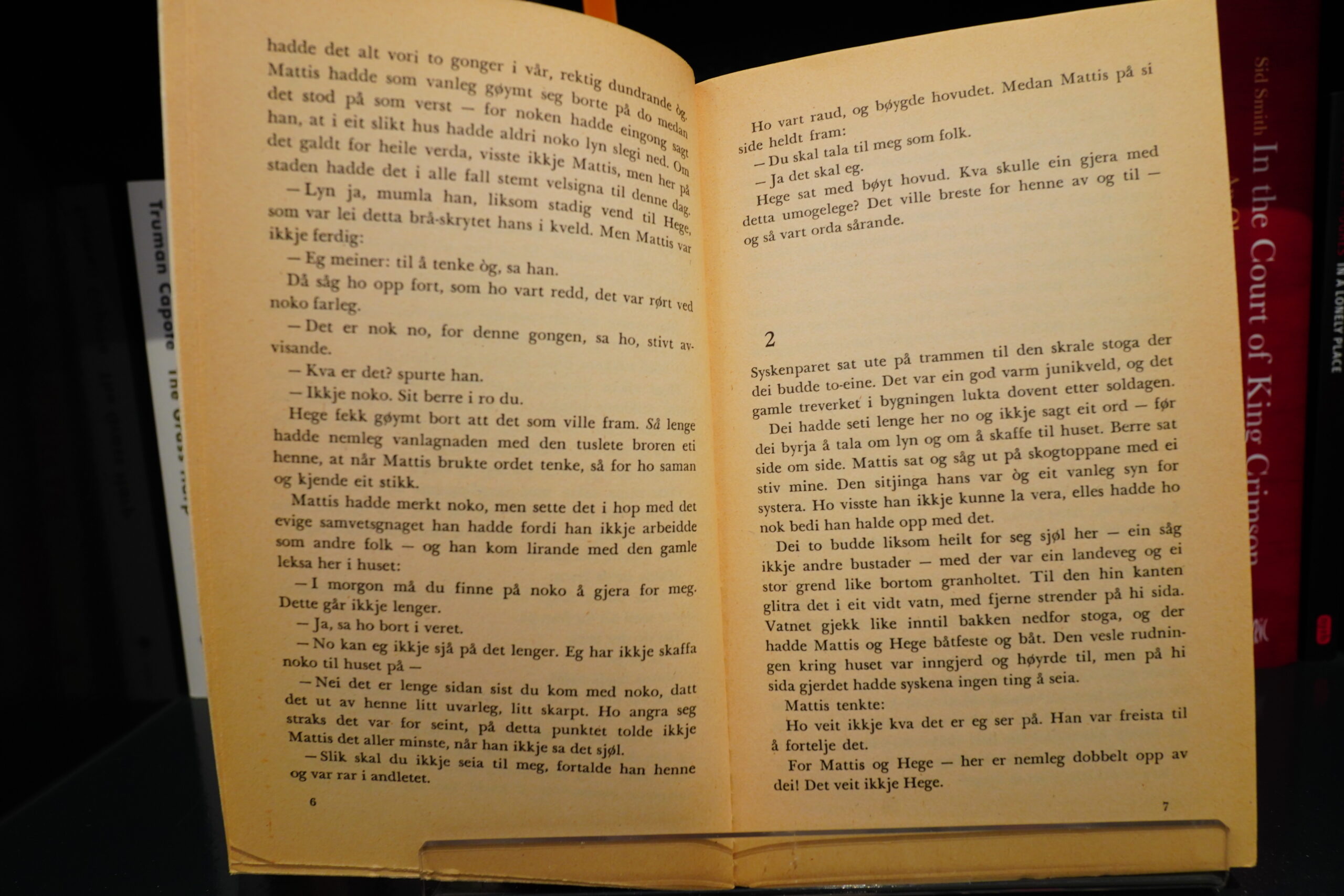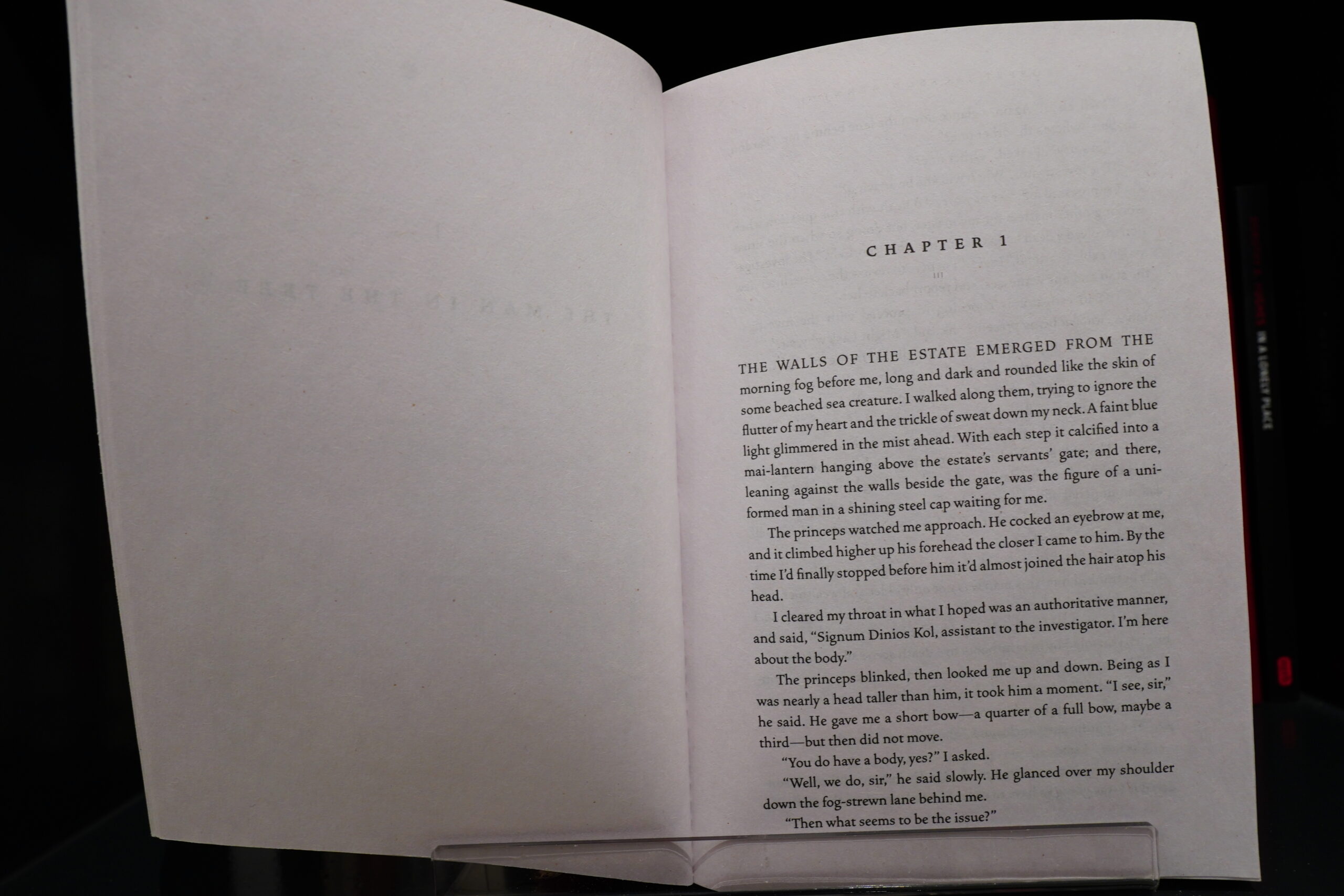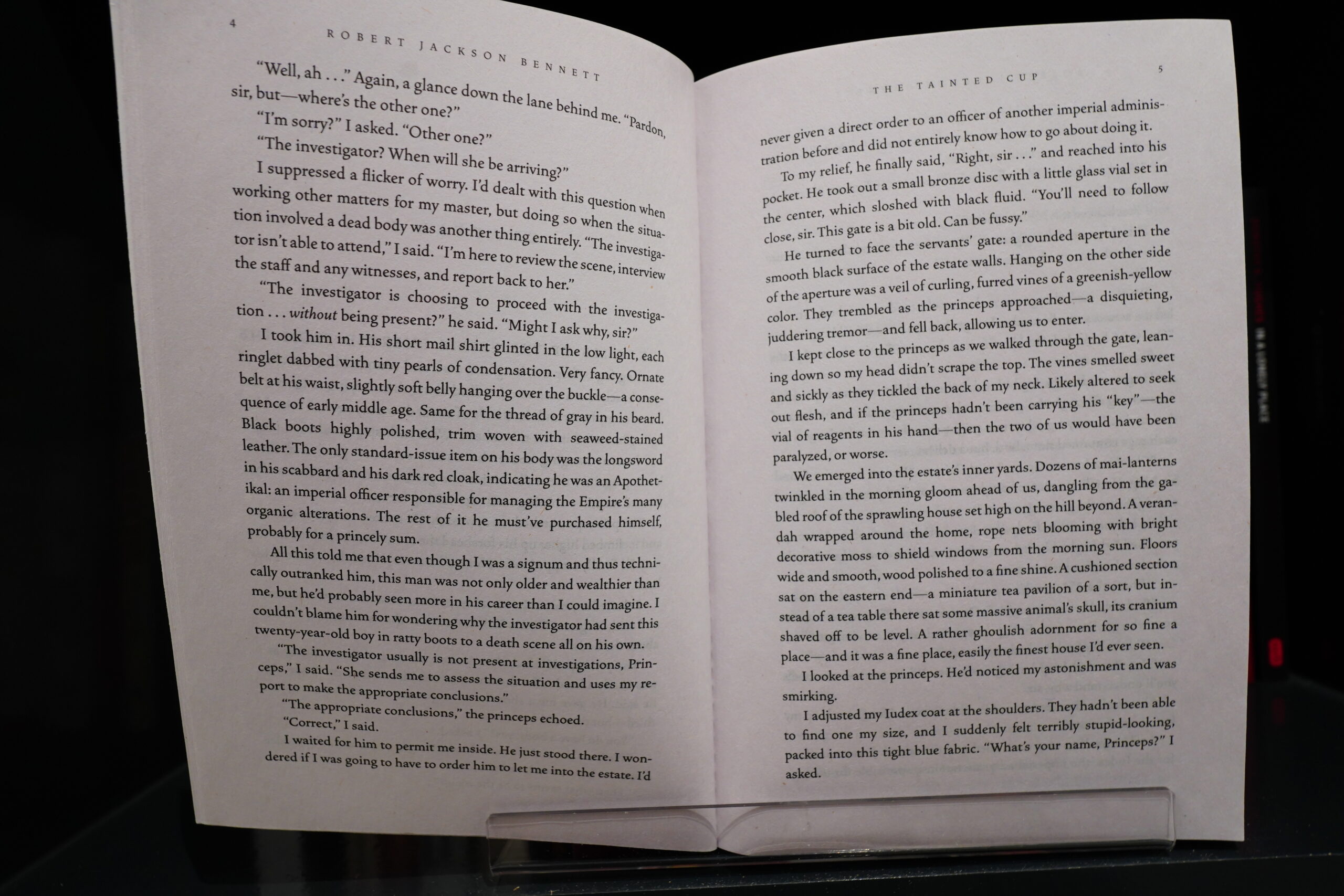Hey, I’ve got WordPress blog statistics in Emacs now, so I can whip up one of these posts like *snap*. Perhaps there’s something interesting here…
Some caveats: Web stats are just hard, and they’re getting more and more useless. Even if you try to use old-fashioned best practices in filtering out non-human traffic (i.e., register stats via JS callbacks to avoid counting curl, as well as filtering out bots that announce themselves), there’s just so many AI browsers that will slam you (and use normal User-Agents) that it’s just impossible. I’ve resorted to filtering out traffic from data centres and all traffic from China/Hong Kong, and so on, but it’s just impossible to get realistic stats these days.
Not that it matters much — it’s all just fun and games anyway.
So here’s the list!
- Perplexingly Book-Learned Emacs
This one won because it was on Hacker News, and I guess it’s catnip for that audience: It’s about Emacs and LLMs.
And update: LLMs are still really bad at what I tried to make them do there — if I ask the newest ones “give me a list of all books written by author X, but exclude books A, B and C”, they’ll respond with a combination of actual existing books, imagined books, and books A, B or C. But of course, never actually all the books like I asked for.
But it’s marginally useful — it’s certainly faster than doing the search myself (if I’m asking about a group of authors). “Fast and kinda wrong”: That’s the LLM mantra.
- Book Club 2025: The Books of Earthsea by Ursula K. Le Guin
This one is also because of Hacker News. When I started the Book Club 2025 blog series, it was just a lark — a way to bloviate a bit after reading a book. I didn’t really expect anybody to read any of these posts, so when it Totally Went Viral I had to do some emergency typo fixing. (I just write those posts; I don’t read them.)
- The Simplest Thing In The World: Modifying Keymaps in Wayland
This one is not because of Hacker News! I sat down and figured out how to do something as radical as … change the keyboard layout in a non-hacky fashion under Wayland. And it’s the most popular post every single day since.
Strangely enough, 90% of the referrers are duckduckgo! Which is really weird — that’s not the case for any other posts here. It could be an AI scraper, I guess, but it doesn’t seem to have any of the telltales for that kind of traffic.
- Wherein I Explain Why Emacs Is The Best Tool For WordPress
I think this one went on all the Emacs reddits and blogs? The thesis of the post is still true.
- Lenovo Carbon X1 12th Gen & Debian Linux: The Nostalgia Experience
Like the Wayland post, this is one that’s perennial — a bunch of hits per day.
But this one has 80% google.com in the referrers. 🤷
- 1989: William Gibson’s Neuromancer
This one makes me a bit suspicious — like the previous one, most of the traffic apparently comes from google.com, but I don’t really see why.
The traffic seems suspiciously spread out… I mean, sure, there are people reading Gibson in Vietnam, but…
- 1986: Omaha the Cat Dancer
I have no problem believing that this one is real, though, despite not going viral. The internet is for porn, the sage once said.
- news.gmane.org is now news.gmane.io
This one is real, too — all the traffic comes from gmane.io, so it’s people looking around for Gmane.
- eww
This oldie is widely linked — from gnu.org and Wikipedia, so that’s natural.
- 1972: Bizarre Sex
And again, no shocker — not only is it about sex: It’s about bizarre sex! Wouldn’t you read it!?
So that’s the Top Ten.
I’m not sure any lessons were learned.
